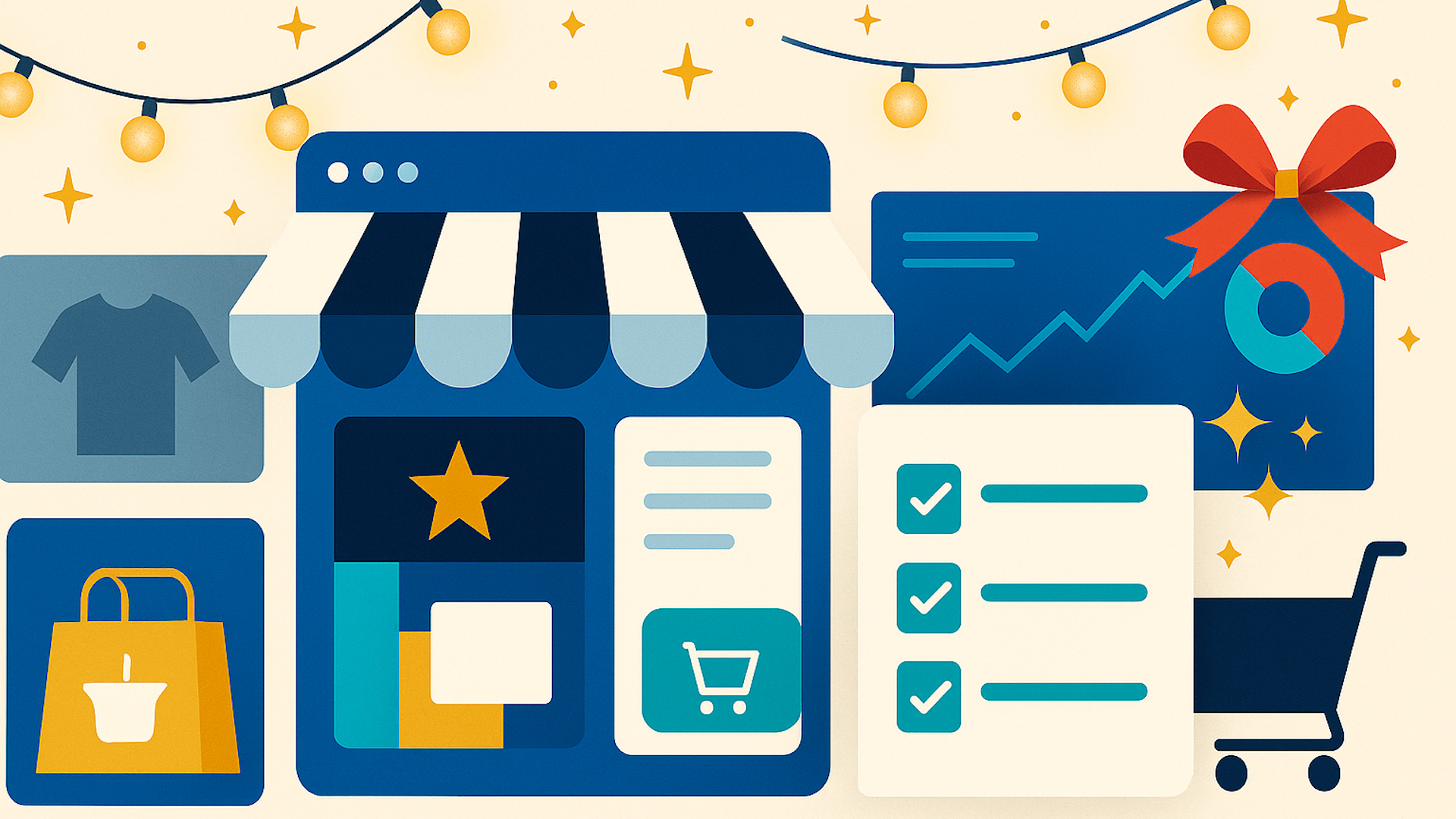Your Q4 ecommerce checklist for peak holiday sales

Q4 is here – and for ecommerce brands, that means the biggest sales opportunities of the year are just ahead.
Black Friday, Cyber Monday, Christmas – the biggest sales events are just around the corner. To hit your targets, preparation is key. It’s not too late to act, and the opportunities ahead are huge.
Use this checklist to get up to speed quickly and set your account up for success.
Website and UX
Review site speed
Start with a website audit to identify any red flags. Tools like PageSpeed Insights can help diagnose technical issues.
Encourage clients to review key pages and the checkout process on multiple devices to ensure there are no bottlenecks.
If resources allow, use heatmap or session analysis tools such as Microsoft Clarity or Hotjar to better understand user behavior and improve the on-site experience.
Confirm tracking setup
Double-check that all tracking is configured correctly across platforms.
Don’t just verify that tags are firing – make sure all events are set up to their fullest potential.
For example, confirm high match rates in Meta and ensure Enhanced Conversions is fully configured.
Add VIP sign-ups/pop-ups
Before the sales period begins, encourage users to join a VIP list for Black Friday or holiday promotions.
This can give them early access or exclusive deals. Set up a separate automated email flow to follow up with these subscribers.
Launch sale page early
Publish your sale page as soon as possible so Google can crawl and index it for SEO.
The page doesn’t need to be accessible from your site navigation or populated with products right away – the key is to get it live early.
If possible, reuse the same URL from previous years to build on existing SEO equity.
You can also add a data capture form to collect VIP sign-ups until the page goes live with products.
Display cutoffs clearly
If shipping cutoff dates aren’t clear, many users won’t risk placing an order close to the deadline.
Clearly display both standard and express delivery cutoff dates on your website.
Highlight sales sitewide with banners
Don’t rely solely on a homepage carousel to promote your sale.
Add a banner or header across all pages so users know a sale is happening, no matter where they land.
Dig deeper: Holiday ecommerce to hit record $253 billion – here’s what’s driving it
Get the newsletter search marketers rely on.
See terms.
Creative and messaging
Run pre-sale lead gen ads
As mentioned with pop-ups, supplementing that strategy with lead generation ads can help grow your email list and build early buzz around your upcoming sale.
Launch simple, clear primary sale ads
These will be your Black Friday or holiday sale ads running for most of the campaign.
Keep the messaging and promotion straightforward. Any confusion in a crowded feed will make users scroll past.
Use strong branding, put the offer front and center, and include a clear CTA. On Meta, this often works best as a simple image ad.
Create Cyber Monday-specific ads
Many brands simply extend their Black Friday sale rather than creating Cyber Monday-specific ads and web banners.
Take advantage of the opportunity to give your campaign a fresh angle – both in messaging and offer.
Since it’s often the final day of your sale, you can go bigger on discounts for one day or add a free gift with purchases over a certain amount.
It’s also a great way to move slower-selling inventory left over from Black Friday.
Refresh primary ads with ‘last days’ urgency
Add urgency to your messaging as the sale nears its end by including countdowns or end dates.
This tactic works especially well for longer campaigns where ad fatigue can set in.
Finalize all creative assets early
November and December are busy months for ad builds and platform reviews.
Make sure all sale assets are ready several weeks before launch to avoid rushed builds and delays from longer approval times.
Advertising and data
Audit product feeds
Make sure item disapprovals and limited products are kept to a minimum. Double-check that your setup is current.
For example, if your return window has changed, update that information in Google Merchant Center.
Refresh first-party data and remarketing lists
Update any lists you plan to use this season.
If you don’t have direct integrations, upload new or revised lists manually.
Review your integrations and confirm that data is flowing correctly.
Build lookalike and custom audiences early
Start building audiences as soon as your first-party and remarketing lists are refreshed.
Create Meta Lookalike Audiences, Performance Max audience signals, and Custom Audiences.
If you run into volume issues, you’ll have time to adjust or explore alternatives.
Finalize budget by week, not just month
Agree on budgets early so you know your spending limits. Don’t plan just by month. Map out weekly spend, too.
You’ll likely want to invest more heavily in the final week of November than in the first.
Use title and description extensions or ad customizers
Updating search ad copy can be tedious and time-consuming.
These tools let you control and update copy dynamically without editing every RSA manually – saving hours in campaign builds.
Use ad assets, promo sitelinks, and GMC promotions
Enable sale-related sitelinks, callouts, and promotion extensions across search campaigns so your offers appear everywhere.
In Shopping, set up Google Merchant Center promotions to highlight deals and incentives in your Shopping ad annotations.
Apply countdown features
Add a dynamic countdown timer to search ads to show exactly when your sale ends.
This feature helps your ads stand out and adds urgency as the sale nears its close.
Launch search remarketing activity
Bid on generic keywords you wouldn’t normally target, but limit them to remarketing or first-party data audiences.
For example, people searching for “Black Friday deals” who have purchased from your site in the past 30 days already know your brand and are primed to buy again.
Apply seasonality adjustments
If you use Google Ads or Microsoft Ads with a target ROAS strategy, apply seasonality adjustments to prepare the algorithm for higher conversion rates during the sale period.
Remember to apply a negative adjustment once the sale ends to prevent unnecessary spend spikes.
Dig deeper: Seasonal PPC: Your guide to boosting holiday ad performance
Focus on what matters most for Q4 success
Not every tactic will fit your business or resources – and that’s OK.
The key is to focus on what will have the biggest impact on your store.
By addressing most of the points in this checklist, you’ll build a solid foundation for a strong Q4 and set yourself up to capture more sales during the busiest shopping season of the year.
Preparation is everything. The earlier you audit, test, and launch, the smoother your campaigns will run when traffic – and competition – start to surge.







Recent Comments